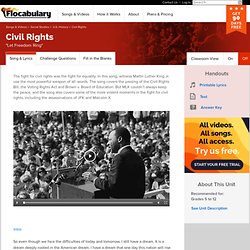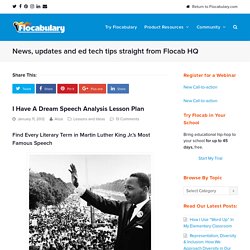

Category: History. You are currently browsing the History category Discover Thanksgiving Myths and Truths Image by readwrtiethink.org Have your students ever watched the television show Myth Busters?

Well now they can discover the myths and truths behind the first Thanksgiving using a lesson plan from readwritethink and Verizon Thinkfinity. Students in grades 6-8 will examine myths about the pilgrims, the Wampanoag, and the very first Thanksgiving. Students will begin by considering the difference between myth and historical truth by reading “Of Plymouth Plantation” by William Bradford. View the complete lesson plan here.
Interact with History Through Veterans History Project Photo by Veterans History Project Looking for a unique Veteran’s Day activity for your students? The project is recommended for students in grades 10 and up, and interviews must be at least 30 minutes long. The Veterans History Project website is also a great classroom resource. Student-Led Debate Teaches Government Newspaper Hunt. » Definition of Alliteration & Examples From Hip-Hop, Literature and History. Martin Luther King - I Have A Dream Speech - August 28, 1963. The I Have a Dream Speech. In 1950's America, the equality of man envisioned by the Declaration of Independence was far from a reality.

People of color — blacks, Hispanics, Asians — were discriminated against in many ways, both overt and covert. The 1950's were a turbulent time in America, when racial barriers began to come down due to Supreme Court decisions, like Brown v. Board of Education; and due to an increase in the activism of blacks, fighting for equal rights. Martin Luther King, Jr., a Baptist minister, was a driving force in the push for racial equality in the 1950's and the 1960's.
In 1963, King and his staff focused on Birmingham, Alabama. Thrust into the national spotlight in Birmingham, where he was arrested and jailed, King helped organize a massive march on Washington, DC, on August 28, 1963. King's appearance was the last of the event; the closing speech was carried live on major television networks. The following is the exact text of the spoken speech, transcribed from recordings. Civil Rights. The fight for civil rights was the fight for equality.

In this song, witness Martin Luther King Jr. use the most powerful weapon of all: words. The song covers the passing of the Civil Rights Bill, the Voting Rights Act and Brown v. Board of Education. But MLK couldn’t always keep the peace, and the song also covers some of the more violent moments in the fight for civil rights, including the assassinations of JFK and Malcolm X. Slavery ended in America with the Civil War. In 1896 the Supreme Court decision in Plessy v. The first big victory for Civil Rights came in 1954 when the Supreme Court decided that "separate but equal" in schools was unconstitutional. In overturning Plessy v. In Brown v. The Brown v. On a December day in 1955, a forty-three- year-old seamstress named Rosa Parks boarded a bus after a long day at work in Montgomery, Alabama. Parks was quickly arrested and within hours the African-American community in Montgomery was uniting. This was the same year that Dr. 1.
» I Have A Dream Speech Analysis Lesson Plan. Find Every Literary Term in Martin Luther King Jr.’s Most Famous Speech Dr.

Martin Luther King Jr. On August 28, 1963, Martin Luther King, Jr. led a march on Washington, D.C. The speech he gave that day is one of the best known in American history. When people remember the “I Have a Dream” speech, as it has come to be known, they recall King’s message about civil rights. This lesson plan allows students to review literary terms, rhetorical devices and figurative language with a scavenger hunt through “I Have a Dream” speech. The Lesson Plan 1. 3. 4. 5. 6. Examples of Literary Terms in the “I Have a Dream Speech” AlliterationThe repetition of sounds makes the speech more catchy and memorable.
In a sense we have come to our nation’s capital to cash a check. We cannot be satisfied as long as a Negro in Mississippi cannot vote and a Negro in New York believes he has nothing for which to vote. Anaphora This term describes the most famous part of the speech: King’s repetition of “I have a dream.”